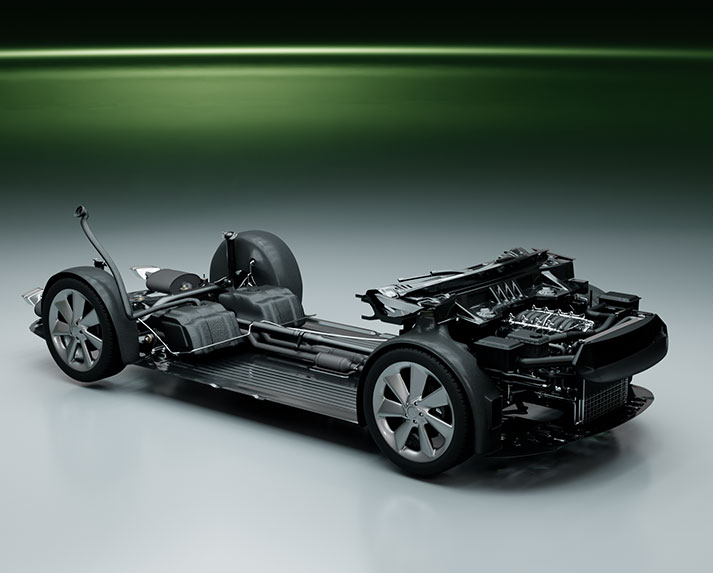Fuel lines
Fuel and fuel vapour transportation lines in internal combustion vehicles (petrol, diesel) and hybrid.
Multilayer tubes straight and convoluted
Low oligomer solutions
Conductive solutions
According to environmental regulations (EURO6d, EURO7, EPA3…)
ILPEA INDUSTRIE
For more than 25 years ILPEA has been providing all major car manufacturers (OEMs) plastic components as a Tier 1 (UBLs) or as a Tier 2 (tank lines).
What are fuel lines in the auto business?


In the auto business, all the multilayer plastic lines, which are used to supply and transport both fuel and/or fuel vapour from the filler head to the fuel tank and into the engine, are called fuel lines.
These lines can be categorized into two big groups:
Tank lines
These lines can be positioned both inside and outside the fuel tank as their main function can be any of the following: fuel input, fuel transportation, fuel output, excrement purging or fuel vapour ventilation.
Underbody lines (UBLs)
These are long lines that transport fuel from the fuel tank (normally placed in the rear part of the vehicle) to the engine (normally placed in the front part of the vehicle). Its main applications are:

Fuel transportation
Introducing fuel in the car engine, transporting fuel back to the fuel tank.
Engine vapour feedback
Fuel vapour and heat feedback to the fuel tank to prevent the engine form overheating.
In order to meet the latest customer demands and the auto sector trends, ILPEA offers fuel lines with the following properties:
Multilayer materials
New and innovative multilayer plastic materials that offer improved performances in vapour permeability, oligomer content, conductivity, among other aspects.
Material picking
Material picking which promotes material configurations that optimize cost/performance ratio. Like the new low oligomeric content multilayer configurations developed by our R&D team.
High resistance
High resistance to all fluids, included ethanol and biodiesel
High stress resistance
High resistance to stress cracking and to the exposure to ZnCl2 compounds.
Electrostatic dissipation
Good electrostatic dissipation in the internal layer (the one in contact with the fluids) in order to minimize the line’s flammability risk.
Size range
Wide size and length ranges as well as capacity to offer both straight and convoluted solutions to ensure that our solutions can adapt to the small free spaces left in vehicle assemblies.
Environmental restrictions
High focus in meeting environmental requirements and improving constantly the emissivity of our plastic multilayer configurations. ILPEA invests in order to meet these requirements a lot of resources in R&D to develop new structures including protective layers such as EVOH or PVDF that keep us at the forefront of the everyday more restrictive emissivity regulations.
Plastic multilayer tubes
-
Straight extrusion: up to 5 layers
-
Convoluted extrusion: up to 3 layers
Extrusion standard dimensions
-
External diameter (Øext): 4 – 50 mm

